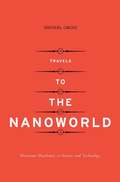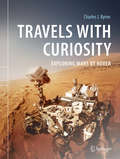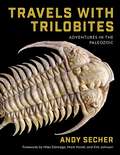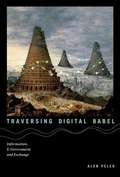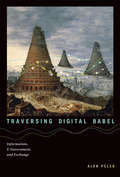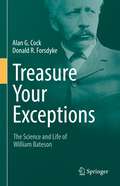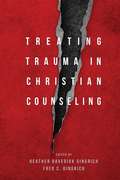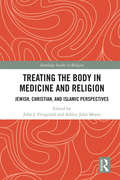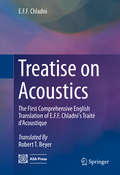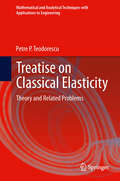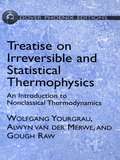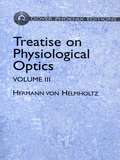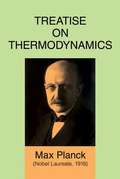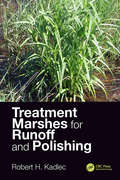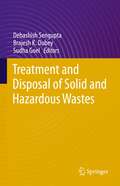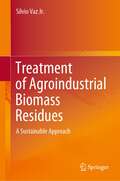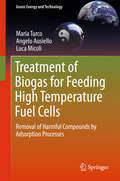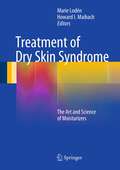- Table View
- List View
Travelling To Infinity: My Life with Stephen
by Jane HawkingMade into a major motion picture, this moving memoir written by Stephen Hawking's first wife covers the turbulent years of her marriage to the astrophysics genius, her traumatic divorce, and their recent reconciliation. Professor Stephen Hawking is one of the most famous and remarkable scientists of our age and the author of the scientific bestseller A Brief History of Time, which has sold more than 25 million copies. In this compelling memoir, his first wife, Jane Hawking, relates the inside story of their extraordinary marriage. As Stephen's academic renown soared, his body was collapsing under the assaults of a motor neuron disease. Jane's candid account of trying to balance his 24-hour care with the needs of their growing family reveals the inner strength of the author, while the self-evident character and achievements of her husband make for an incredible tale presented with unflinching honesty. Jane's candor is no less apparent when the marriage finally ends in a high-profile meltdown, with Stephen leaving Jane for one of his nurses and Jane marrying an old family friend. In this exceptionally open, moving, and often funny memoir, Jane Hawking confronts not only the acutely complicated and painful dilemmas of her first marriage, but also the relationship's fault lines exposed by the pervasive effects of fame and wealth. The result is a book about optimism, love, and change that will resonate with readers everywhere.
Travels to the Nanoworld: Miniature Machinery in Nature and Technology
by Michael GrossOur lives are about to be changed by new technologies that operate on a scale too small to be seen by even the most powerful optical microscopes. Devices measured in nanometers-billionths of a meter-have set off a nanotechnology revolution. In Travels to the Nanoworld, Michael Gross takes us deep into this miniature universe and describes natural processes and new technologies that will make modern machines look like relics from the Stone Age. Starting with the model of the living cell, whose vital processes are directed and carried out by structures with dimensions on the nanometer scale, Gross shows how biochemists are beginning to understand the mechanisms of the "nanotechnology of nature. " Soon science will have the knowledge and technology to generate artificial systems that will perform similar tasks, and through them will find new treatments for disease, substitutes for toxic waste, and alternatives to carbon fuel.
Travels with Curiosity: Exploring Mars by Rover
by Charles J. ByrneThe Mars Curiosity Rover is the most sophisticated mobile laboratory ever deployed on a planet. For over seven years, scores of investigators have planned its daily route and activities, poring over the overwhelming images and data and revising our understanding of planetary surfaces, geology, and potential habitability.This book takes readers right down to the surface of Mars, chronicling Curiosity’s physical and scientific journey across the planet’s Earth-like, yet strikingly alien vistas. Through dozens of images and descriptive accounts of the surface, you will gain a deeper knowledge of the Martian landscape, from the floor of Gale Crater up to the cliffs of Mount Sharp. Presented at the end of each chapter are the results and revelations from the science team spearheading the mission.Like any cross-country road trip, the rover has hit some unexpected hitches along the way. The book describes the obstacles faced by the rover and its scientists over the years and the difficult decisions and careful experimentation it took to solve them.
Travels with Trilobites: Adventures in the Paleozoic
by Andy SecherTrilobites were some of the most successful and versatile organisms ever to exist. Among the earliest forms of complex animal life, these hard-shelled marine invertebrates inhabited the primal seas of the Paleozoic Era. Their march through evolutionary time began in the Lower Cambrian, some 521 million years ago, and lasted until their demise at the end of the Permian, more than 250 million years later. During this vast stretch of planetary history, these adaptable animals filled virtually every available undersea niche, evolving into more than 25,000 scientifically recognized species.In Travels with Trilobites, Andy Secher invites readers to come along in search of the fossilized remains of these ancient arthropods. He explores breathtaking paleontological hot spots around the world—including Alnif, Morocco, on the edge of the Sahara Desert; the Sakha Republic, deep in the Siberian wilderness; and Kangaroo Island, off the coast of South Australia—and offers a behind-the-scenes look at museums, fossil shows, and life on the collectors’ circuit. The book features hundreds of photographs of unique specimens drawn from Secher’s private collection, showcasing stunning fossil finds that highlight the diversity, complexity, and beauty of trilobites. Entertaining and informative, Travels with Trilobites combines key scientific information about these captivating creatures with wry, colorful observations and inside stories from one of the world’s most prolific collectors.
Traversing Digital Babel
by Alon PeledThe computer systems of government agencies are notoriously complex. New technologies are piled on older technologies, creating layers that call to mind an archaeological dig. Obsolete programming languages and closed mainframe designs offer barriers to integration with other agency systems. Worldwide, these unwieldy systems waste billions of dollars, keep citizens from receiving services, and even -- as seen in interoperability failures on 9/11 and during Hurricane Katrina -- cost lives. In this book, Alon Peled offers a groundbreaking approach for enabling information sharing among public sector agencies: using selective incentives to "nudge" agencies to exchange information assets. Peled proposes the establishment of a Public Sector Information Exchange (PSIE), through which agencies would trade information. After describing public sector information sharing failures and the advantages of incentivized sharing, Peled examines the U.S. Open Data program, and the gap between its rhetoric and results. He offers examples of creative public sector information sharing in the United States, Australia, Brazil, the Netherlands, and Iceland. Peled argues that information is a contested commodity, and draws lessons from the trade histories of other contested commodities -- including cadavers for anatomical dissection in nineteenth-century Britain. He explains how agencies can exchange information as a contested commodity through a PSIE program tailored to an individual country's needs, and he describes the legal, economic, and technical foundations of such a program. Touching on issues from data ownership to freedom of information, Peled offers pragmatic advice to politicians, bureaucrats, technologists, and citizens for revitalizing critical information flows.
Traversing Digital Babel: Information, E-Government, and Exchange (Information Policy)
by Alon PeledA groundbreaking approach to information sharing among government agencies: using selective incentives to “nudge” them to exchange information assets.The computer systems of government agencies are notoriously complex. New technologies are piled on older technologies, creating layers that call to mind an archaeological dig. Obsolete programming languages and closed mainframe designs offer barriers to integration with other agency systems. Worldwide, these unwieldy systems waste billions of dollars, keep citizens from receiving services, and even—as seen in interoperability failures on 9/11 and during Hurricane Katrina—cost lives. In this book, Alon Peled offers a groundbreaking approach for enabling information sharing among public sector agencies: using selective incentives to “nudge” agencies to exchange information assets. Peled proposes the establishment of a Public Sector Information Exchange (PSIE), through which agencies would trade information. After describing public sector information sharing failures and the advantages of incentivized sharing, Peled examines the U.S. Open Data program, and the gap between its rhetoric and results. He offers examples of creative public sector information sharing in the United States, Australia, Brazil, the Netherlands, and Iceland. Peled argues that information is a contested commodity, and draws lessons from the trade histories of other contested commodities—including cadavers for anatomical dissection in nineteenth-century Britain. He explains how agencies can exchange information as a contested commodity through a PSIE program tailored to an individual country's needs, and he describes the legal, economic, and technical foundations of such a program. Touching on issues from data ownership to freedom of information, Peled offers pragmatic advice to politicians, bureaucrats, technologists, and citizens for revitalizing critical information flows.
Treading on Thin Air: How Weather Shapes Our Everyday Lives
by Elizabeth AustinWeather is an inescapable part of our daily lives, from the nuances of air travel to the breadth of human history. Our past, present, and future is intimately rooted is weather and climate. Weather, water, and climate. How we feel, how productive we are, even our sheer existence, depends on these three things. The United States economic activity varies annually by 1.7% due to weather--that is more than $500 billion dollars each year! Weather applications on mobile devices are the second most popular 'apps' - more popular than social networking, maps, music,and news. In Treading on Thin Air, Dr. Elizabeth Austin, a world-renowned atmospheric physicist, reveals how the climate is intimately tied to our daily lives. The effects and impacts of weather on humans, society and the planet are changing with the times. Dr. Austin will demystify climate change, revealing what is really happening with our climate and why, whether it is El Nino, tornadoes, floods or hurricanes. Weather and society are at its most fascinating at extremes, and as Dr. Austin is one of a handful of forensic meteorologists around the globe. She has been called upon to investigate plane crashes, murders, wildfires, avalanches, even bombing cases. Drawing upon her rich experiences, Austin's Treading on Thin Air promises to be an enlightening and informative journey through the wild word of weather.
Treasure Your Exceptions: The Science and Life of William Bateson
by Donald R. Forsdyke Alan G. CockThis biography provides an understanding of William Bateson as well as a reconciliation of diverging views (e.g. the hierarchical thinking of Gould and the genocentrism of George Williams and Richard Dawkins). Evolutionists may thus, at long last, present a unified front to their creationist opponents. The pressing need for this text is apparent from the high percentages reported not to believe in evolution and the growth of the so-called "intelligent design" movement.
Treasure in the Trees
by Christopher ChengTreasure in the Trees explores the beauty of nature and science.
Treating Trauma In Christian Counseling (Christian Association For Psychological Studies Books)
by Heather Davediuk Gingrich Fred C. GingrichTraumatic experiences are distressingly common, and the risks of developing posttraumatic stress disorder are high. But in recent years the field of traumatology has grown strong, giving survivors and their counselors firmer footing than ever before to seek healing. <P><P>This book is a combined effort to introduce counseling approaches, trauma information, and Christian reflections to respond to the intense suffering people face. With extensive experience treating complex trauma, Heather Gingrich and Fred Gingrich have brought together key essays representing the latest psychological research on trauma from a Christian integration perspective. Students, instructors, clinicians, and researchers alike will find the following: <br>An overview of the kinds of traumatic experiences. <br>Coverage of treatment methods, especially those that incorporate spirituality. <br>Material to critically analyze as well as emotionally engage trauma. <br>Theoretical bases for trauma treatment and interventions. <br>References for further consideration and empirical research.
Treating the Body in Medicine and Religion: Jewish, Christian, and Islamic Perspectives (Routledge Studies in Religion)
by John J. Fitzgerald Ashley John MoyseModern medicine has produced many wonderful technological breakthroughs that have extended the limits of the frail human body. However, much of the focus of this medical research has been on the physical, often reducing the human being to a biological machine to be examined, understood, and controlled. This book begins by asking whether the modern medical milieu has overly objectified the body, unwittingly or not, and whether current studies in bioethics are up to the task of restoring a fuller understanding of the human person. In response, various authors here suggest that a more theological/religious approach would be helpful, or perhaps even necessary. Presenting specific perspectives from Judaism, Christianity and Islam, the book is divided into three parts: "Understanding the Body," "Respecting the Body," and "The Body at the End of Life." A panel of expert contributors—including philosophers, physicians, and theologians and scholars of religion— answer key questions such as: What is the relationship between body and soul? What are our obligations toward human bodies? How should medicine respond to suffering and death? The resulting text is an interdisciplinary treatise on how medicine can best function in our societies. Offering a new way to approach the medical humanities, this book will be of keen interest to any scholars with an interest in contemporary religious perspectives on medicine and the body.
Treatise on Acoustics
by E.F.F. ChladniE. F. F. Chladni's experiments and observations with sound and vibrations profoundly influenced the development of the field of Acoustics. The famous Chladni diagrams along with other observations are contained in Die Akustik, published in German in 1802 and Traité d'Acoustique, a greatly expanded version, published in French in 1809. This is the first comprehensive translation of the expanded French version of Traité d'Acoustique, using the 1802 German publication for reference and clarification. The translation was undertaken by Robert T. Beyer, PhD (1920-2008), noted acoustician, Professor of Physics at Brown University, and Gold Medal recipient of the Acoustical Society of America. Along with many other projects completed over the course of his career, Dr. Beyer translated Von Neumann's seminal work, Mathematical Foundations of Quantum Mechanics from the original German, spent 30 years translating Russian physics treatises and journals, served as editor of the English translation of the Soviet Journal of Experimental and Theoretical Physics, and also authored Sounds of our Times: Two Hundred Years of Acoustics.
Treatise on Classical Elasticity: Theory and Related Problems
by Petre P. TeodorescuDeformable solids have a particularly complex character; mathematical modeling is not always simple and often leads to inextricable difficulties of computation. One of the simplest mathematical models and, at the same time, the most used model, is that of the elastic body - especially the linear one. But, notwithstanding its simplicity, even this model of a real body may lead to great difficulties of computation. The practical importance of a work about the theory of elasticity, which is also an introduction to the mechanics of deformable solids, consists of the use of scientific methods of computation in a domain in which simplified methods are still used. This treatise takes into account the consideration made above, with special attention to the theoretical study of the state of strain and stress of a deformable solid. The book draws on the known specialized literature, as well as the original results of the author and his 50+ years experience as Professor of Mechanics and Elasticity at the University of Bucharest. The construction of mathematical models is made by treating geometry and kinematics of deformation, mechanics of stresses and constitutive laws. Elastic, plastic and viscous properties are thus put in evidence and the corresponding theories are developed. Space problems are treated and various particular cases are taken into consideration. New solutions for boundary value problems of finite and infinite domains are given and a general theory of concentrated loads is built. Anisotropic and non-homogeneous bodies are studied as well. Cosserat type bodies are also modeled. The connection with thermal and viscous phenomena will be considered too. Audience: researchers in applied mathematics, mechanical and civil engineering.
Treatise on Irreversible and Statistical Thermodynamics: An Introduction to Nonclassical Thermodynamics
by Alwyn van der Merwe Gough Raw Wolfgang YourgrauExtensively revised edition of a much-respected work examines thermodynamics of irreversible processes, general principles of statistical thermodynamics, assemblies of noninteracting structureless particles, and statistical theory. 1966 edition.
Treatise on Physiological Optics, Volume III (Dover Books on Physics #3)
by Hermann Von HelmholtzThe most important work ever produced in the field of physiological optics, this classic is a model of scientific method and logical procedure, and it remains unmatched in its thorough and accessible approach.This is the third in a three-volume republication of the definitive English translation of Handbuch der Physiologischen Optik, originally published by The Optical Society of America in 1924 and containing everything that was known about physiological optics up until that time. The substratum consists of the data that Helmholtz furnished in the two nineteenth-century German editions that appeared during his lifetime. These volumes also contain extensive supplementary matter that Nagel, Gullstrand, and Kries incorporated in the third German edition of 1911, as well as significant new material prepared for the 1924 English translation by C. Ladd-Franklin, Gullstrand, and Kries, with copious annotations by James P. C. Southall that brought the work up to date with current research.Volumes I and II discuss the dioptrics of the eye and the sensations of vision;Volume III examines the perceptions of vision. Its topics include eye movements; the monocular field of vision; direction of vision; perception of depth; binocular vision; and many other highly important topics. Appendixes cover later findings on spatial configuration in vision and the theory of binocular instruments. Indexes for all three volumes are organized by subject and author.
Treatise on Sustainability Science and Engineering
by S. K. Sikdar Y. Huang I. S. JawahirThis book is aimed at providing a comprehensive overview of recent developments in sustainability science and engineering. The book focuses on principles and practices and presents 18 interwoven chapters on four major themes: design for sustainability; sustainability metrics and analysis; sustainable energy; and sustainable supply/value. Significant, state-of-the-art work, methodologies, practices and plans are presented by researchers, technology developers and industry leaders. Topics discussed include: life cycle assessment; product end-of-life options; practical approaches to sustainability; environmental footprint assessment; biofuels; and sustainable supply chain management.
Treatise on Thermodynamics (Dover Books on Physics)
by Max PlanckThis classic by the Nobel Laureate is still recognized as one of the best introductions to thermodynamics. A model of conciseness and clarity, it covers fundamental facts and definitions, first and second fundamental principles of thermodynamics, applications to special states of equilibrium, and much more. Numerous worked examples. 1917 edition.
Treatment Marshes for Runoff and Polishing
by Robert H. KadlecTreatment Marshes for Runoff and Polishing represents the most comprehensive and up-date-date resource for the design, construction, and operation of marsh treatment systems. This new edition represents a complete rewrite of the surface flow sections of previous editions of Treatment Wetlands. It is based on the performance hundreds of treatment marshes over the past 40 years. Treatment Marshes focuses on urban and agricultural runoff, river and lake water improvement, and highly treated municipal effluents. New information from the past dozen years is used to improve data interpretation and design concepts. Topics included in this book are Diversity of marsh vegetation Analyses of the human use of treatment marshes New concepts of underground processes and functions Spectrum of marsh values spanning mitigation, restoration, enhancement, and water quality improvement Improved methods for calculation of evapotranspiration and wetland water temperatures Hydraulics of surface and subsurface flows in marshes Analysis of long track records for deterministic and probabilistic behavior Consideration of integrated microbial and vegetative contaminant removals via mass balances Uptake and emission of gases Performance of urban and agricultural wetlands Design procedures for urban and agricultural wetlands Reduction of trace metals, pesticides, pharmaceuticals, endocrine disruptors, and trace organics Updated capital and O&M economics, and valuation of ancillary benefits An updated list of over 1900 references
Treatment and Disposal of Solid and Hazardous Wastes
by Debashish Sengupta Sudha Goel Brajesh K. DubeyInterest in solid and hazardous waste management is relatively recent, i.e., in the last three decades, and is driven by regulations in most countries. It began with industrial hazardous waste followed by municipal solid waste, and subsequently by many other categories of waste.This book presents numerous examples and case studies of innovative tools, treatment methods and applications in this growing area of research and development. It describes in detail laboratory methods of measuring the biodegradation of specific organic fractions, like floral waste, and also discusses the treatment of yard and food waste by anaerobic digestion and landfill leachate using constructed wetlands. Case studies are provided that show how remote sensing (RS) and GIS were used to develop an integrated solid waste management plan for a city and to evaluate the environmental impacts of stone quarrying activities.The book also features chapters discussing the implications of natural radioactivity in beach placers and their impact on groundwater and other parts of the environment, as well as the twelve principles of green chemistry and their application in the reuse and recycling of solid waste. Moreover, it includes examples of waste to energy, like refuse derived fuel and biofuel generation and an evaluation of their potential, and covers topics such as life cycle assessment as a tool for developing integrated solid waste management systems and an overview of municipal solid waste management rules, illustrating the importance of technological inputs in the development of regulatory frameworks.Written by leading practitioners and scholars in the field, the book enables readers to understand and apply these principles and practices in their endeavours.
Treatment for Posttraumatic Stress Disorder in Military and Veteran Populations
by Committee on the Assessment of Ongoing Effects in the Treatment of Posttraumatic Stress DisorderPrior to the military conflicts in Iraq and Afghanistan, wars and conflicts have been characterized by such injuries as infectious diseases and catastrophic gunshot wounds. However, the signature injuries sustained by United States military personnel in these most recent conflicts are blast wounds and the psychiatric consequences to combat, particularly posttraumatic stress disorder (PTSD), which affects an estimated 13 to 20 percent of U. S. service members who have fought in Iraq or Afghanistan since 2001. PTSD is triggered by a specific traumatic event - including combat - which leads to symptoms such as persistent re-experiencing of the event; emotional numbing or avoidance of thoughts, feelings, conversations, or places associated with the trauma; and hyperarousal, such as exaggerated startle responses or difficulty concentrating. As the U. S. reduces its military involvement in the Middle East, the Departments of Defense (DoD) and Veterans Affairs (VA) anticipate that increasing numbers of returning veterans will need PTSD services. As a result, Congress asked the DoD, in consultation with the VA, to sponsor an IOM study to assess both departments' PTSD treatment programs and services. Treatment for Posttraumatic Stress Disorder in Military and Veteran Populations: Initial Assessment is the first of two mandated reports examines some of the available programs to prevent, diagnose, treat, and rehabilitate those who have PTSD and encourages further research that can help to improve PTSD care.
Treatment of Agroindustrial Biomass Residues: A Sustainable Approach
by Sílvio Vaz Jr.This book provides an indispensable reference guide to the sustainable control and treatment of biomass residues from a wide variety of agroindustrial sources, e.g. sugarcane, livestock, pulp & paper, food wastes, among others. Pursuing a structured and clear approach, the book opens with a general introduction to biomass, sustainability and environmental chemistry aspects, and on how the use of biomass as a renewable material ties into the UN’s Sustainable Development Goals. The book subsequently presents analytical methods applied to different biomass types and their residues and reviews monitoring and treatment strategies in order to avoid pollution of the same. The book closes by describing the value chains, bioeconomy and circular economy for globally relevant agroindustrial biomass. The book is intended for researchers in academia and industry alike and shows how, in addition to sustainability criteria and life cycle assessments, integrating environmental chemistry aspects can contribute to a holistic approach, and unlock the economic potential of biomass in the age of circular economy and sustainable development.
Treatment of Biogas for Feeding High Temperature Fuel Cells
by Maria Turco Angelo Ausiello Luca MicoliThis book reports on the most recent applications of processes with a particular focus on the source and the properties of biogas and on the characteristics of the fuel cells (FCs). It describes adsorbing materials of potential interest are reviewed and the preparation methods and treatments employed to improve the adsorption properties as well as the stability and regenerability. The characterization of the chemical and physical properties involved in these processes is examined in particular detail. The book also covers aspects that concern the development of the adsorption apparatus with particular attention on the target of low residual concentration and high selectivity. High temperature FCs, such as molten carbonates (MCFCs) or solid oxides (SOFCs), are efficient, with a low environmental impact, and they can use a wide variety of fuels, such as biogas. The presence of some poisonous compounds such as sulphides, halides, and siloxanes can react with electrode catalysts and electrolyte, leading to the degradation and short lifetime of the cell. The treatment of raw biogas to obtain a FC-compatible fuel is mainly based on adsorption processes on suitable materials.
Treatment of Dry Skin Syndrome
by Howard I. Maibach Marie LodénDevelopment of moisturizers is a scientific and artistic discipline, where consumer insights are also needed. This new book bridges the gap between the moisturizers and the skin by covering all the essential information required to tailor the use of moisturizers to particular disorders and patients. Important aspects of skin biochemistry and barrier function are explained, and the ingredients and treatment effects of moisturizers are explored in depth. Careful attention is paid to controversies, including the role of certain moisturizers in inducing dryness/eczema, asthma, and comedones. The information provided in this unique book will enable the reader to go beyond the traditional thinking regarding skin care. The novel insights offered will suggest the properties required for a new generation of moisturizing treatments that more effectively improve the quality of life.
Treatment of Industrial Effluents: Case Studies
by Mihir Kumar Purkait Piyal Mondal Chang-Tang ChangTo address the issue of discharge of untreated industrial effluent in the water body causing pollution, adoption of cleaner production technologies and waste minimization initiatives are being encouraged. The book explains each related technology elaborately and critically analyses the same from practical application point of view. In-depth characterization, environmental and health effects and treatment of various industrial effluents are discussed with case studies. Limitations, challenges and remedial actions to be taken are included at the end of each chapter. Chapters are arranged as per specific type of effluents from various industries like textile, tannery/leather plant, and oil refinery.
Treatment of Non-vitamin K Antagonist Oral Anticoagulants
by Masaaki Uno Kuniaki OgasawaraThis book describes new concepts and strategies for the clinical application of non-vitamin K antagonist oral anticoagulants (NOACs) for stroke. Although vitamin K antagonists have traditionally been used for the prevention of stroke, there are some problems associated with their use, such as the risk of intracranial hemorrhage, the need for dietary restrictions, and individual variability. Recently, NOACs have been introduced as alternatives to traditional anticoagulants and are becoming an option for treating stroke patients around the globe. However, their use is not without risk. Each chapter describes the successful use of NOACs for stroke patients and discusses their future impact from various points of view. The book is primarily written for neurosurgeons and neurologists but is also of interest to cardiologists involved in stroke treatment.

